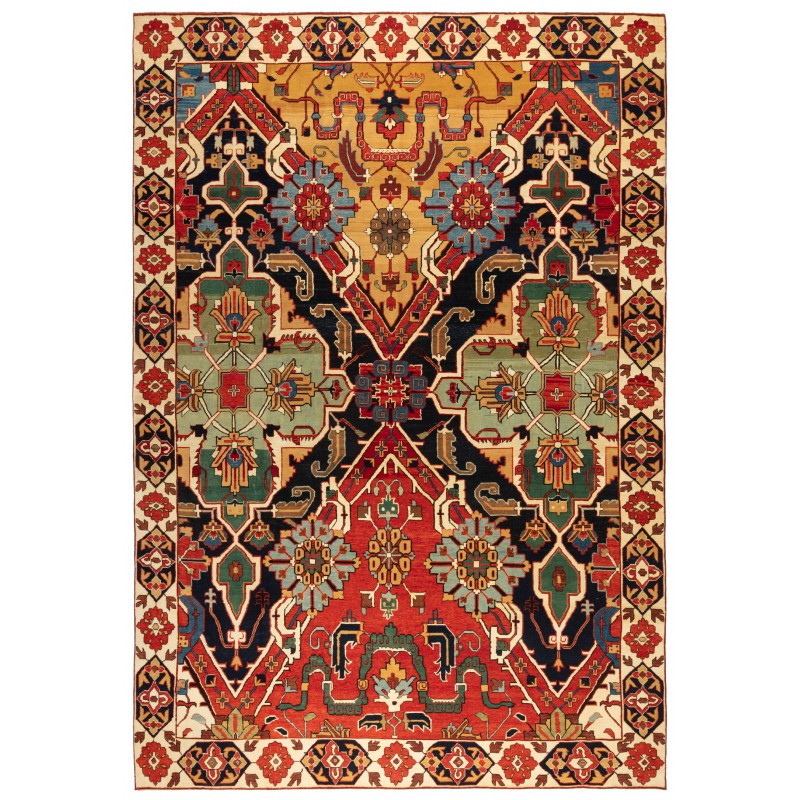
- Stock: 売り切れ
- Model: C40067
- サイズ: 255cm x 370cm
この絨毯の情報は、Joseph V. McMullanによる著書『Islamic Carpets』(Near Eastern Art Research Center Inc.、ニューヨーク、1965年、nr.41)からのものです。この絨毯は「ニグデ絨毯」として有名になりました。カフカースで生産されたものでありながら、中央アナトリアのニグデのモスクで発見され、その後1908年にF.R.マーティンによってその発見後すぐに出版されました。
この絨毯のデザインは、同じ地域で生産された他の重要な絨毯タイプであるドラゴン絨毯やいわゆるクバスとは異なり、非常に珍しいものです。これは連続的に交互に配置されたダイヤモンド形のメダリオンを巨大なスケールで基にしています。これらのダイヤモンドパネルの一列はランセットの葉、パルメット、雲のバンドで埋められており、交互の列は大きな十字形の図柄で埋められ、その周囲にはハーフパルメットとランセットの葉があります。ダイヤモンドの先端と各側面の中央には大きなパルメットの花が現れます。ダイヤモンドパネルの背景色を交互に配置することで、まれに見る華やかな効果が生まれます。ボーダーデザインは、スタイライズされた花の形状で埋められた六角形のカルトゥーシュの交互の列と、小さな花のロゼットで構成された一般的なカフカースのモチーフに従っています。もう一つの長方形のサイズの例は、メトロポリタン美術館(MET Museum)に展示されています(アクセッション番号56.217)。この絨毯のデザインは解釈され、オリジナルに合った最適な色彩が使用されています。
The source of the carpet comes from the book Islamic Carpets, Joseph V. McMullan, Near Eastern Art Research Center Inc., New York 1965 nr.41. This rug has become famous as the “Niğde Carpet.” Although certainly produced in the Caucasus, it was found in the mosque of Niğde in Central Anatolia and was published in 1908 by F. R. Martin shortly after its discovery.
In contrast to the other important rug types that have been produced in the same area, the Dragon Rugs and the so-called Kubas, the design of this carpet is highly unusual. It is based on a continuously alternating system of diamond-shaped medallions on a huge scale. One row of these diamond panels is filled with lancette leaves, palmettes, and cloud bands; the alternate row with large cruciform figures is filled with palmettes and surrounded by half-palmette and lancette leaves. Large palmette blossoms appear at the tips of the diamond points and in the center of each side of these panels. Alternating in the background color, the diamond panels create an almost unparalleled sumptuous effect. The border design follows a common Caucasian motif consisting of an alternate row of hexagonal cartouches, filled with stylized floral forms, and small floral rosettes. The other long-size example is exhibited at The Metropolitan Museum of Art (MET Museum Acc. No. 56.217). The design of this rug is interpreted and the most appropriate colors to match the original is used for this rug.
